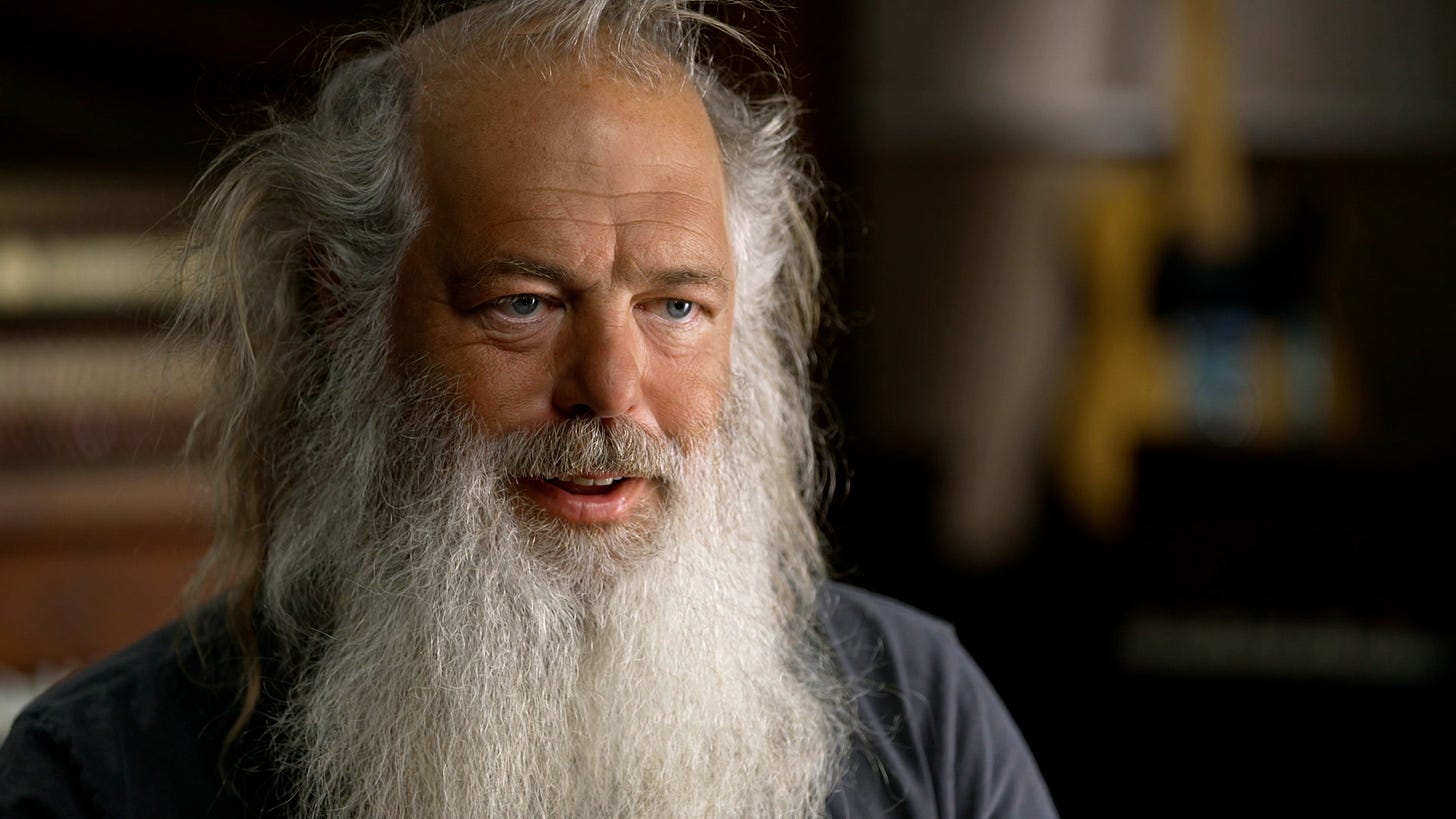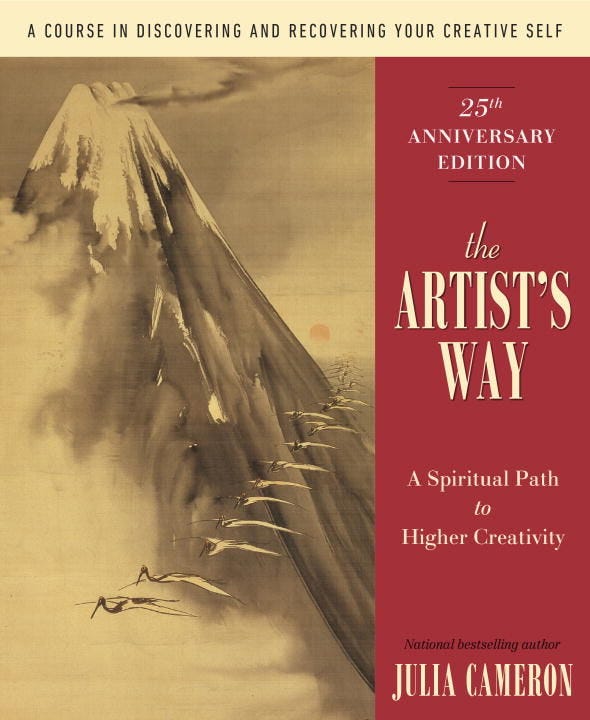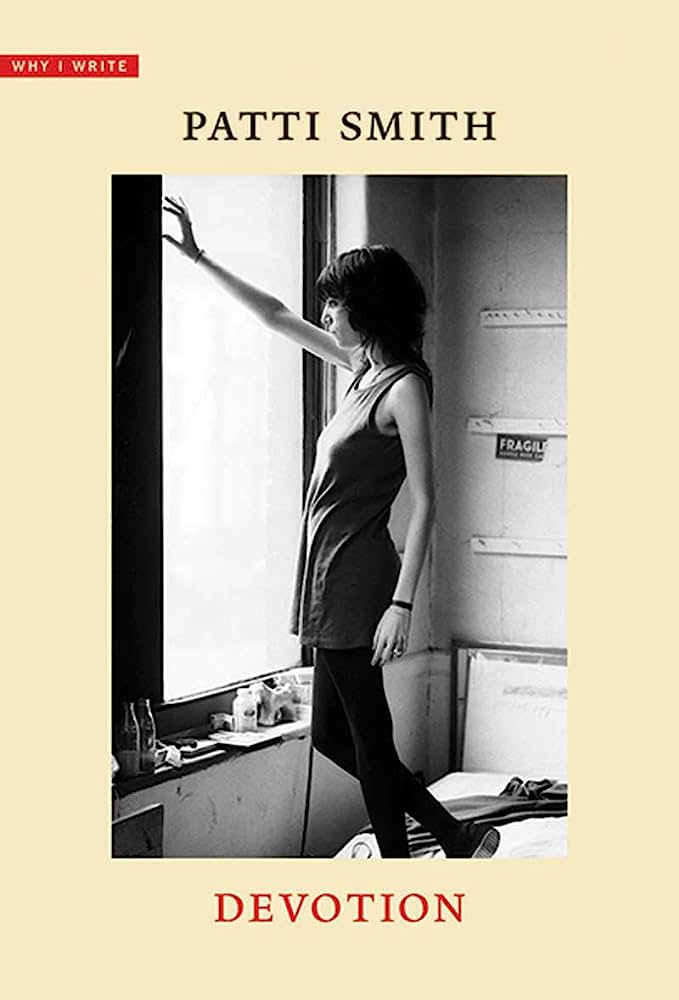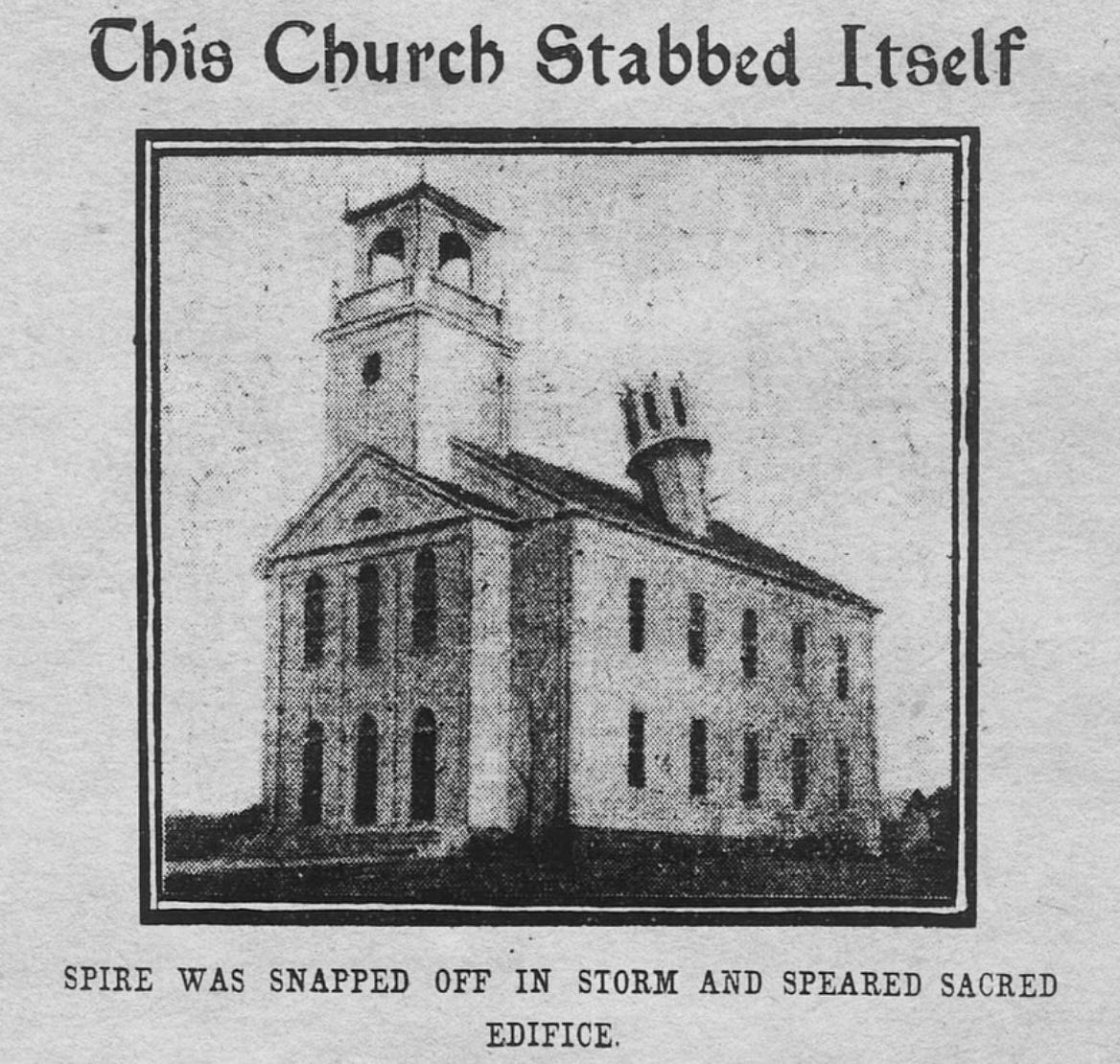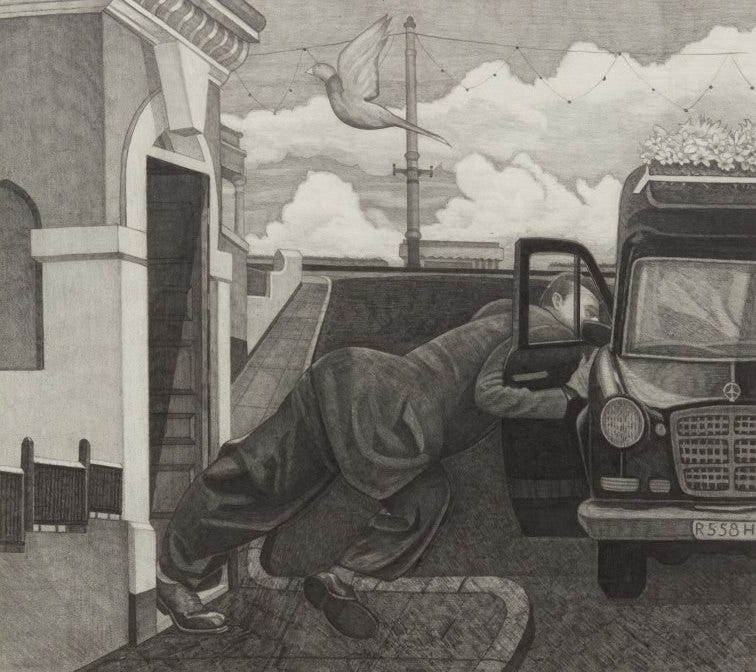Issue 21: The Creative Act
Self-help for artists. Help.
All last week I kept thinking of an anecdote involving Irish playwright Brendan Behan. He was invited to Oxford University to participate in a debate about the differences between prose and poetry. The first speaker took two hours to present his argument. In response, Behan recited a short poem: “There was a young fella named Rollocks / Who worked for Ferrier Pollock’s / As he walked on the Strand / With a girl by the hand / The water came up to his ankles.” “That is prose,” said Behan. “But if the tide had been in it would’ve been poetry.” *
I had been reading Rick Rubin’s new book The Creative Act: A Way of Being, and wishing for thoughts on the artistic process as irreverent as Behan’s. Or anything, really, that would leaven the unrelentingly pious tone of Rubin’s writing. Rubin, for those unfamiliar, began his career in New York during the early 1980s, playing in punk bands. He went on to run the Def Jam hip-hop record label with Russell Simmons, releasing records by artists including LL Cool J, Run DMC, Public Enemy and the Beastie Boys, along with metal band Slayer. After leaving Def Jam, he produced big acts including Dixie Chicks, Metallica, Tom Petty, and the Red Hot Chilli Peppers. He produced Jay-Z’s ’99 Problems’, found enormous success working with Johnny Cash on his final stretch of solo albums, and was briefly the co-head of Columbia Records. Now he’s the author of a creative self-help book, just published by Penguin.
The Creative Act (written with the assistance of journalist Neil Strauss, author of books including pick-up artist bestseller The Game and Mötley Crüe: The Dirt) is a 400-plus book of advice for artists, divided into 78 short chapters or “Areas of Thought.” It is written in short, limpid sentences. These have the ring of a man trying to sound as ancient and wise as his beard makes him look. Rubin’s gnomic affect evokes the gentle tinkle of wind-chimes and the sound of Pacific Ocean waves crashing on exclusive beaches in Malibu. It’s a little like listening to a mindfulness app, or having Brian Eno’s ‘Oblique Strategies’ explained to you by a marketing employee at Goop.
Rubin introduces the reader to concepts such as ‘Source’ which he liberates from the shackles of the definitive article, making it sound like a cosmic deity enountered on an ayahuasca trip. “Source makes available. The filter distills. The vessel receives. And often this happens beyond our control.” That or a character from a children’s book. “It may be helpful to think of Source as a cloud. Clouds never truly disappear. They change form. They turn into rain and become part of the ocean, and then evaporate and return to being clouds. The same is true of art.” And punctuating the book are pithy profundities which made me wonder if my money had been better spent on a nice scented candle instead. Each is given its own page, surrounded by blank space, and
typeset like this,
for no discernible reason
other than
it makes them look like
a Zen kōan;
full of gravitas.
Rubin tells us that everyone is an artist. It’s that old Joseph Beuys canard, superficially well-intentioned but which comes off as aristocratic condescension rather than democratic levelling, because it doesn’t value being, say, a mechanic, or a nurse, for what they are, but for being disguised forms of artistry. (What makes life interesting for me is precisely the fact that not everyone is the same, that not everyone is an artist, even if imagination, broadly speaking, is a facility everyone makes use of.) Rubin suggests his readers embrace states of joy, gratitude, even ecstasy, in the process of making art, and yet the aspirational guru tone of the book is so unyielding throughout, so colourless, as to absent it of all those qualities. It reminds me of a paradox found in the religiously pious, or in certain stripes of political artists, whereby the louder someone shouts about doing good or being on the right side of history, the more those principles seem to recede from view, and the more the person seems to be asserting their own goodness or personal place on the right side of history. (Rubin would possibly distill that observation to “Righteousness fertilizes ego” and give the sentence an entire page to itself.)
The Creative Act is, in certain respects, an update of Julia Cameron’s bestselling self-help guide The Artist’s Way, written in 1992. The authors speak the language of self-empowerment and encouragement, suggest daily exercises to help keep the imagination limber, and garland their advice with insights of cosmic numinosity. The Artist’s Way isn’t for me, but I appreciate that it works for others. And even if The Creative Act barely acknowledges that having a job, or feeling knackered, or raising kids, or having health issues, or where you live are all factors that shape creativity, it does contain useful advice. There are passages about dealing with self-doubt, about creative constraints, momentum, scale, openness, the value of mistakes, and other aspects of making things that ring true from my own experiences. Rubin offers solid, counter-intuitive, Eno-ish methods for getting around problems and shaking old habits.
Being an artist is hard. It’s even harder if you want to make things—music, writing, art—and don’t have anyone to talk to about what you want to do. No mentors, no creative friends or family, none of the professional accreditations that might open a door. Like practical how-to videos on YouTube, books such as The Creative Act have the potential to be helpful. Problems arise when they’re mistaken for ‘life hacks’, on the same level as little get-arounds to make your workouts or time management more efficient. Art can’t be gamed. (Its professional systems might be, but that’s another subject.) A great song might be written in an hour. A great novel might require fifty years of living on the part of its author before it can be written. Rubin, to his credit, is clear about that. But there is a metric of success in these sorts of books that’s set by the author’s own career. No matter how many times Rubin advises his readers to follow their own path, it’s hard not to think that some may be reading his book in order to find out how to make millions of dollars as a music producer. How to be like Rick Rubin rather than be like themselves.
A similar thought struck me recently as I read Patti Smith’s short book Devotion, published by Yale University Press and Windham Campbell Prizes as part of their ‘Why I Write’ series. It’s billed on the jacket blurb as “an intimate account of her own creative process.” Smith’s book couldn’t be further from Rubin’s. It’s short. She has a sparkier prose style. Her writing feels alive rather than wellness influencer flat, whether you care for it or not. In the chapter ‘How the Mind Works’, she manages to capture something of what happens in her imagination during the early stages of an idea taking shape. This, the gut feeling of inspiration, is difficult to record, as it’s made up of too many fleeting moments and chance connections to be codified into advice. Yet as I read Devotion I kept thinking how nice it would be to pack a small bag with a notebook, camera, leather jacket and a spare shirt and head to Paris, as Smith does in the book. There I would drift through Saint-Germain-des-Prés thinking of Rimbaud and Verlaine. I would enjoy a little breakfast at the Café de Flore, jotting in my notebook—doesn’t matter what, so long as I’ve got the coffee and the leather jacket and a nice pen—before going to meet my publishers at Gallimard for lunch, where I would stroll through their hallowed gardens thinking of Camus and Genet… The lifestyle details she describes make it hard to see past the romance and discover what drives her, but perhaps the romance is the lesson. (I’ve been around the block enough times to know that its supposed opposite, ascetic ‘criticality,’ is its own delusional romance.)
Rubin’s prose is vague. There are few concrete examples of anything in its pages. Perhaps it is trying to be open enough in its language to welcome a broad range of readers. But as someone once observed—I can’t remember who, though I think W.H. Auden’s poetry was their subject—the most resonant love poems are usually those made from specific experiences, not generalizations. I’m often looking for advice myself, reassurance that I’m not alone in my creative anxieties and career doubts. (Occasionally, when confronted with an artistic problem, I simply think of the title of a friend’s essay collection: What Would Lynne Tillman Do?) I turn to biographies and interviews with artists. The detailed ‘Art of Fiction’ and ‘Art of Non-Fiction’ interviews in The Paris Review are where I’ve found some of the best practical advice about writing and riding the vicissitudes of creative life. I love music and movie memoirs for the same reasons. They all teach the same lessons through example. That no artist’s career can be mapped onto a perfect rising curve of success. That there will be good years and bad years. That some people catch a break early in life, and others much later and many not at all. That not everything you make will be good. That you can’t make work in order to please other people. You’ve got to trust in your own voice and just get on with it.
If you do so, you may one day find yourself meditating on the deck of an enormous beach house in California, dictating a self-help guide for artists. Please include dirty limericks.
*Ferrier Pollock was the name of a haberdashery company in Dublin. Other accounts give the poem as: “There was a young man / Called Christopher Hand / Who worked in Ferrier Pollock's / He walked on the strand / With his shoes in his hand / And the water came up to his ankles.”
RECOMMENDATIONS
—Starting next month, Chris and Cosey are releasing remasters of their 1980s deep cuts, some of which have been unavailable for a long time. The first is Elemental 7, from 1984, which was made in collaboration with video artist and musician John Lacey. (When I was making my film about COUM Transmissions and Throbbing Gristle, I got to spend a day with John, exploring his archive and interviewing him about his time in COUM. He’s was fascinating and generous. One scene, which didn’t make the final cut, showed John operating a large kinetic sculpture made from an old iron lung, and which produced the most soulful drone sounds.) Elemental 7 features the incredible ‘Dancing Ghosts,’ a song too far ahead of its time for its own good.
—I like this image, spotted on the medievalist instagram account @enclosedwithin.
—If you’re in New York, visit Peter Freeman Inc. and see their small exhibition of drawings by British artist Paul Anthony Harford, selected by his niece, the painter Cecily Brown. Harford refused to exhibit his work in his lifetime, and this is the first time it has been show in the USA. (The only previous exhibitions have been at Focal Point Gallery, Southend-on-Sea, and at Sadie Coles in London). They depict disquieting dream versions of the coastal towns Weymouth and Southend, and seem one part Stanley Spencer and one part J.G. Ballard. (Maybe even a little Beryl Cook.) It’s only up until 25 February. And while you’re out, visit the delicate, lyrical show of sculptures by Mexican artist Tania Pérez Córdova at Tina Kim Gallery—made from strange combinations of materials, such as plant leaves, jewellery, and glass. I find them difficult to evoke, perhaps the strongest recommendation for seeing them. For the opposite effect, the cramped exhibition of enormous Richard Avedon ‘mural’ photographs at the Metropolitan Museum of Art is worth a look, especially for the outtakes of Warhol’s Factory crowd and the architects of the US Vietnam War trying to assemble themselves in front of the camera.
—Filmmaker Eva Aridjis has recently launched (Screen)Play Press with Christine Vartoughian, dedicated to publishing unproduced screenplays. It’s a beautiful idea. Their first six releases are out now.
—Ignite films has just released (after some delay) a restored version of William Cameron Menzies 1953 science-fiction movie Invaders From Mars. This film has stayed with me ever since I saw it as a child: it’s a haunting mixture of ‘50s Cold War pulp and nightmarish, almost Expressionist, cinema. A young boy is the sole witness to a UFO landing in his small town, and struggles to convince the grown-up world of what he’s seen, as the alien invaders gradually take over the bodies of his family and neighbours. The sets are painterly, abstract. (There is a strange recurring shot of a wooden fence on a dirt track hilltop that seems to find a later echo in Spielberg’s Close Encounters of the Third Kind. He saw the movie five times as a kid.) It uses exaggerated camera angles and ghoulish lighting. Even the wooden acting underscores the film’s unnerving atmosphere. It’s an A-plus B-movie.

